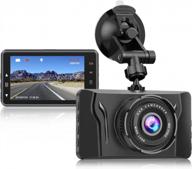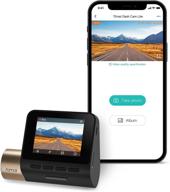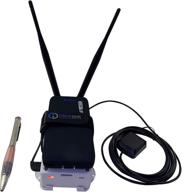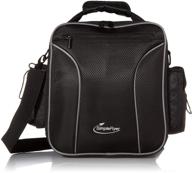
Review on Tyt TH-9000D VHF2 Mono Band Mobile Car Radio Transceiver - 50 Watt, 200 Channel, 8 Scrambler, Black by Michael Hudson

Reliable and easy to use once programmed
I had it for about three weeks and waited to check because I wanted to see if there were any problems. They are not here. I'm using this as a base station with a 7A TrippLite power supply. It's not enough to run the radio at full power, so I can't comment on the radio overheating issues. I know it doesn't get hot at 10w or 25w power settings. I don't need more than 10 watts to power any of the local repeaters here in Mpls./St. Pavel comes from the other side of town. It's a bit different than other reviewers here. I also use a Centerfire Antennas 3-element Yagi mounted on a portable tripod on my balcony. Determine if you really *need* 55W all the time before temperature issues let you buy it. Such power may be needed for a simplex, but in the 220MHz band the simplex is not very active. I'd happily pay less for a 25W radio (like the Alinco DR-235T), but it costs about $50 more, so I went with this TYT transceiver. Advanced Specialties included a programming cable and I had no trouble installing the software. XP. I like the software more than the PuXing or BaoFeng counterparts and even the TYT F9 software. For those who complain about the user interface, you can program the buttons for the functions you want. Obviously buttons can't be labeled since you *choose* what you want them to do. It's not the radio's fault if you can't remember how you programmed it. After programming the repeaters and simplex channels, I found that there was very little *need* for buttons. I set P1 to "Scan", P2 to Power Level ("H/L") and P3 to Noise Reduction ("SQL"). I don't use the other two at all. You can also define different functions for long or short press of each key. I really don't see why anyone would bother with CTCSS, offset or compander after the radio is programmed. The speaker is on top of the radio, which can be a problem in a mobile installation. There is a connection for an external speaker. The top speaker is sufficient, but nothing special. I don't like the microphone and don't find the microphone buttons useful. The up/down buttons on either side of the top of the mic are somewhat useful. Again, I don't see much point in manually entering a frequency or accessing functions after they've been programmed, and certainly not while driving. I would have preferred an alternative microphone without buttons and *speakers* instead. The hanger is also impractical. The pin assignment for connecting the microphone is specified in the manual so that an alternative microphone can be put into operation if the cable assignment is changed. You should be aware that the compander is more or less useless and should be disabled. This feature compresses the transmitted audio and then decompresses it at the receiving radio. However, if the receiver doesn't have the same compander (i.e. another TYT TH-900) to recreate the sound, then you're just making your sound terrible. This is useful for something like the commercial fleet, but not for radio amateurs. The guide is way better than what you will find from PuXing, BaoFeng and Wouxun. English is not very good but understandable. I see no need for an "additional signaling" capability, although I wish it had the MSK for ANI. This is another example of this radio being intended for commercial use rather than amateur radio. You can set a password to control the radio if you choose one from the software. While this is more of a commercial purpose, it may also prevent small (unsupervised) children from playing with it. Again, this is entirely optional. The scan feature is faster than most Chinese radios, but I can't find a way to get out of "priority" mode. However, I can choose which channel is prioritized. For those who don't know, this means the radio scans the first channel, then checks the priority channel, then checks the second channel, then the priority channel, and so on. You can set the scan delay and 'pause' time through the software and specify what you want the radio to do when you stop the scan. For example, it can return to the last channel you broadcast before the scan, or to the channel you *listened* to before the scan. I have no problem with the display being too dark. Each channel can be assigned seven-digit names, which I really like. 200 channels is overkill for a VHF transceiver on the 1.25M band. In most cities there are only one or two repeaters on the band (although we have five) and a total of 13 simplex channels. I don't see an easy way to use this radio to transmit packets, but in the 220MHz band it doesn't matter to me. Pay attention to the "Channel Spacing” setting. The default is 25 kHz, although our local (MN) frequency plan is 20 kHz. This can be easily changed using software, but is also easily overlooked when programming. If you are looking for a reliable, easy to use radio that you can use with more powerful than HT FM repeaters then this is for you. . It draws 12A at full power, so choose your power supply based on your base usage. If you put some thought into the initial programming, it will pay off in the long run.
- Durable finish
- Was damaged
New products
Top products in 🚗 Car Electronics

Upgrade Your Car'S Safety With CHORTAU'S 2023 Dash Cam - 1080P FHD, 170° Wide Angle, Night Vision, And More

44 Review

DVR 70mai Dash Cam Pro Plus Rear Cam Set A500S-1, 2 cameras, GPS, GLONASS, black

44 Review

Roadgid CityGo DVR 3 Wi-Fi, 2 cameras, black

64 Review

70mai Dash Cam Lite: Full HD 1080P, Smart Car Camera 🚗 with Sony IMX307, G-Sensor, Wide Angle FOV, Night Vision & Loop Recording

52 Review
Another interesting products

🔍 MANN-FILTER W 811/80: The Optimal Oil Filter for Enhanced Engine Performance

11 Review

🛩️ Stratux ADS-B Dual Band Receiver: Advanced Aviation Weather and Traffic System with WAAS GPS, AHRS, Battery Pack, Suction Mount, Antennas, SDR

9 Review

🎧 Alpha Pilot Headset Flight Bag (Black) – Streamlined Flyer Solution

8 Review

✈️ Enhancing Aviation Safety: ASA-OVC View Limiting Device for Clearer Vision in Overcast Conditions

9 Review





